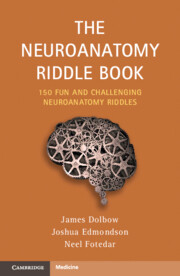The smallest but the longest,
From the back I come to play,
Though my goal may be oblique,
Without me you’ll tilt away.
Hint #1:
Think head tilt.
Hint #2:
Cranial nerve.
Trochlear Nerve (CN IV)
Cranial nerve IV, the trochlear nerve, is the smallest cranial nerve and has the longest intracranial path as it exits from the dorsal midbrain (at the level of inferior colliculus), crosses to the other side of the brainstem and travels along the lateral wall of the cavernous sinus, exiting the skull through the superior orbital fissure, and traveling all the way to the superior oblique muscle. Because of decussation of the intraparenchymal fibers after originating from the nucleus, the left trochlear nucleus eventually innervates the right superior oblique muscle and vice versa.
The superior oblique muscle acts as an intorter and depressor. Thus, a lesion of the nerve would inhibit this movement, creating a superiorly deviated orbit that is extorted, thus leading to a vertical and torsional diplopia. To correct for the misalignment, patients often tilt their head forward (to correct for elevation) and away from the affected eye (to correct for extortion).
A skew deviation can also produce a vertical misalignment of eyes like trochlear nerve palsy. A three-step Parks–Bielschowsky test can help localize the affected muscle in a patient with vertical diplopia. It can also differentiate between skew deviation and trochlear nerve palsy because the degree of vertical misalignment changes with gaze and head tilt in trochlear nerve palsy but not in skew deviation. Another way to distinguish between the two is by the upright-supine test. In a patient with skew deviation, there is >50% reduction in both vertical and torsional misalignments from the upright position to the supine position.

